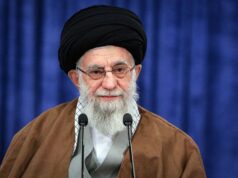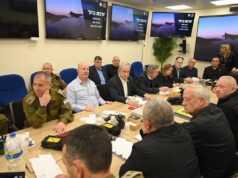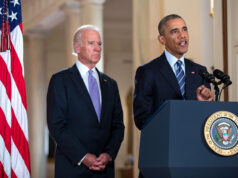In recent months, the media has reported that Washington is preparing to undertake preventive military action against Iran to thwart its nuclear ambitions. U.S. Government reports regarding Iran’s role as a supplier of Improvised Explosive Devices (IEDs) used in attacks on U.S. forces in Iraq, recent progress in Iran’s nuclear program, and the deployment of carrier battle groups to the Persian Gulf region have inspired further speculation. However, few, if any of these media reports have systematically examined the challenges of prevention.
U.S. policymakers considering prevention face numerous uncertainties that complicate their decision calculus. What might prevention accomplish? Can the risks of Iranian retaliation be mitigated? Can the consequences of Iranian proliferation be managed? And can a nuclear Iran be deterred? Policymakers must also consider a number of other political and military-technical factors that could complicate a decision to act.
Consulting Congress…
Although the U.S. Constitution invests in Congress the power to declare war, the last time Congress did so was World War II. In recent decades, the president has obtained a joint resolution from Congress authorizing him, as commander-in-chief, to use military force to confront major threats to international peace and security; this was the case with the two wars in Iraq—Operation Desert Storm in 1991 and Operation Iraqi Freedom in 2003. On other occasions, the president has ordered military strikes or committed U.S. forces to combat without a joint resolution; this was the case with Operation Deliberate Force in 1995 and Operation Allied Force in 1999 (both in the former Yugoslavia), and Operation Infinite Reach, the 1998 cruise missile strikes against alleged al-Qaeda targets in Sudan and Afghanistan.
Given this precedent, the need for secrecy to ensure a successful surprise attack, coupled with deepening and widening divisions over the war in Iraq, the Bush administration is likely to find itself on the horns of a dilemma in Iran. Should the administration act without consultations – thereby jeopardizing public support for subsequent measures against Iran? Should it inform a select, bipartisan group of members of Congress of its intention to strike just before doing so? Or should it encourage Congress to openly debate the merits of military action? This third option would certainly preclude surprise, allowing Iran time to disperse and hide key elements of its nuclear program. It would also risk defeat of a joint resolution. As such, the politics of preventive action could prove a major challenge for the administration.
…and Allies
Many U.S. allies stand to be adversely affected by Iranian retaliation for a preventive strike, which could, among other things, take the form of a global terrorism campaign. The United States, therefore, has an obligation to warn its allies in advance to prepare for the figurative “fallout” from a preventive strike. Because operational security considerations could preclude immediate advance warning, Washington should encourage allies well in advance – without implying that prevention is imminent – to reduce their vulnerability to Iranian retaliation. This might include: rolling up suspected Iranian agent networks; reducing staffing at their embassies in Iran; or taking steps to secure embassies and cultural centers in third countries of concern.
Timing
If Washington were to strike, would sooner be better than later? At least three factors could influence the timing of an operation: the quality of intelligence, the maturity of Iran’s nuclear infrastructure, and the state of Iran’s scientific-technical human resource pool.
Intelligence. By about 2004, while some clandestine facilities may have remained undetected, the international community had a detailed picture of most of Iran’s nuclear program. Since February 2006, however, Iran has barred International Atomic Energy Agency (IAEA) inspectors from visiting sites other than those where safeguarded materials are present, raising uncertainties regarding its nuclear program. New intelligence, however, could expose ongoing activities or previously undisclosed clandestine Iranian facilities. It is therefore impossible to assess, based solely on publicly available data, how passing time impacts the urgency of possible prevention.
Nuclear Infrastructure. Any operation would have to target Iranian workshops engaged in centrifuge component production as soon as possible because of their potential to contribute to a clandestine program. And though some of Iran’s major facilities are complete, such as the conversion plant at Esfahan, others are in the early phases of construction, such as the centrifuge facility at Natanz and the research reactor at Arak. Striking facilities that are in the early phases of construction would yield little benefit. Should Washington opt for prevention, it would make sense to wait until some of these Iranian facilities are closer to completion, although protective measures at these sites might improve with the passage of time.
Human Resources. Discussion about preventive action almost always focuses on striking facilities, but people are equally critical. Finding a way to neutralize key scientists, engineers, and project managers (by encouraging them to emigrate or by other means) is critical to successful prevention. Here, time is of the essence. With the passage of time, these individuals gain experience and know-how, which they are likely to share with other Iranian – and perhaps foreign – colleagues.
These three factors follow independent and, in some cases, contradictory timelines. Accordingly, there may not be an optimal moment to strike. Successful prevention may well require intermittent strikes (in conjunction with other measures) against various target sets over time.
Target Intelligence
Accurate target intelligence is the sine qua non of effective preventive action. On the one hand, because of the risks preventive action would entail – and in light of intelligence failures regarding weapons of mass destruction in Iraq and elsewhere –policymakers will likely set a high bar for action. On the other hand, the intelligence community has chalked up a number of important successes uncovering nuclear programs in North Korea (1993) and Libya (2003), as well as the Abdul Qadir Khan nuclear supplier network (2003). Indeed, recent revelations about Iran’s nuclear activities apparently derived from leaks from individuals with some knowledge of the program. Thus, one should not dismiss the possibility that the intelligence picture concerning Iran’s nuclear program could change rapidly, thanks to additional leaks.
Weaponeering
Destroying buried, hardened targets with either conventional or nuclear penetrator munitions involves tremendous uncertainties, such as the quality of the target intelligence, the configuration of the facility, its depth underground, the composition or geology of the earth overburden atop the facility, and hardening measures taken to protect it. Some analysts claim that nuclear earth-penetrating munitions (such as the B61 Mod 11 bomb) would be required to destroy key Iranian nuclear facilities. Given what is known about Iran’s centrifuge enrichment plant at Natanz (a relatively shallow “cut and cover”-type facility), large conventional penetrator munitions could possibly disable or destroy the facility, even if repetitive strikes would be necessary to penetrate the target. The U.S. military is currently testing a 28,000-pound Massive Ordnance Penetrator (MOP) bomb, which is several times larger, and which will penetrate much deeper, than previous conventional penetrators. Conventional attack should therefore not be ruled out as an option.
Measuring Success
Success in prevention would be measured primarily in terms of the delay imposed on Iran’s nuclear program. For this reason, a plan to make the most of the time gained by prevention is critical. Any good plan would hinge on nonproliferation measures to disrupt Iranian efforts to rebuild its nuclear program, accelerated efforts to promote regime change in Iran, or other steps. Failing to plan for how to best use the time gained by prevention would be a major oversight.
Another critical element to an American success is preventing an Iranian nationalist backlash. Tehran would almost certainly attempt to leverage an attack on its nuclear facilities to undermine pro-American sentiment in Iran and consolidate popular support for the regime. Thus, prior to military operations, Washington must explain to the Iranian people through a high-profile information campaign that its goal is to prevent the mullahs from obtaining “the bomb,” which would jeopardize regional peace and the welfare of the Iranian people.
A successful U.S. operation would also include strikes on the headquarters and barracks of the Ministry of Intelligence and the Islamic Revolutionary Guard Corps (IRGC) – organizations that have ties to Iran’s nuclear program and that are responsible for repression at home and terror abroad. Thus, attacks on Tehran’s apparatus of repression, tied to a carefully crafted information campaign, might help mitigate a nationalist backlash against the United States and limit the regime’s ability to exploit a backlash for its own purposes.
Conclusion
Even as it seeks a diplomatic solution, the United States should keep the military prevention option on the table. Whether Tehran can be cowed by threats of preventive action is unclear. Indeed, some Iranian politicians might welcome an attack as a means of fomenting a nationalist reaction to bolster their domestic standing. However, the possibility of preventive action might help stiffen weak European spines and move Russia and China to lend greater support to sanctions and other, tougher measures. Finally, the threat of prevention could deter foreign investment in Iran, imposing additional costs on the Islamic Republic for its current policies.
Preventive action is neither “off the table” nor inevitable. Next steps will likely be influenced by a number of factors, including the outcome of ongoing diplomacy with Iran, the availability of detailed and accurate target intelligence, and the impact of the war in Iraq on the Administration’s tolerance for risk. Should Washington choose preventive action, it would likely be based on the post-9/11 doctrine of keeping the most dangerous weapons out of the hands of the most dangerous regimes.
MICHAEL EISENSTADT is a senior fellow and director of the Military and Security Studies Program at The Washington Institute for Near East Policy.





